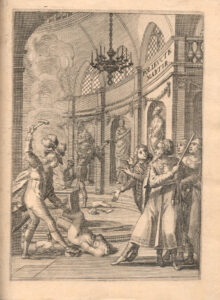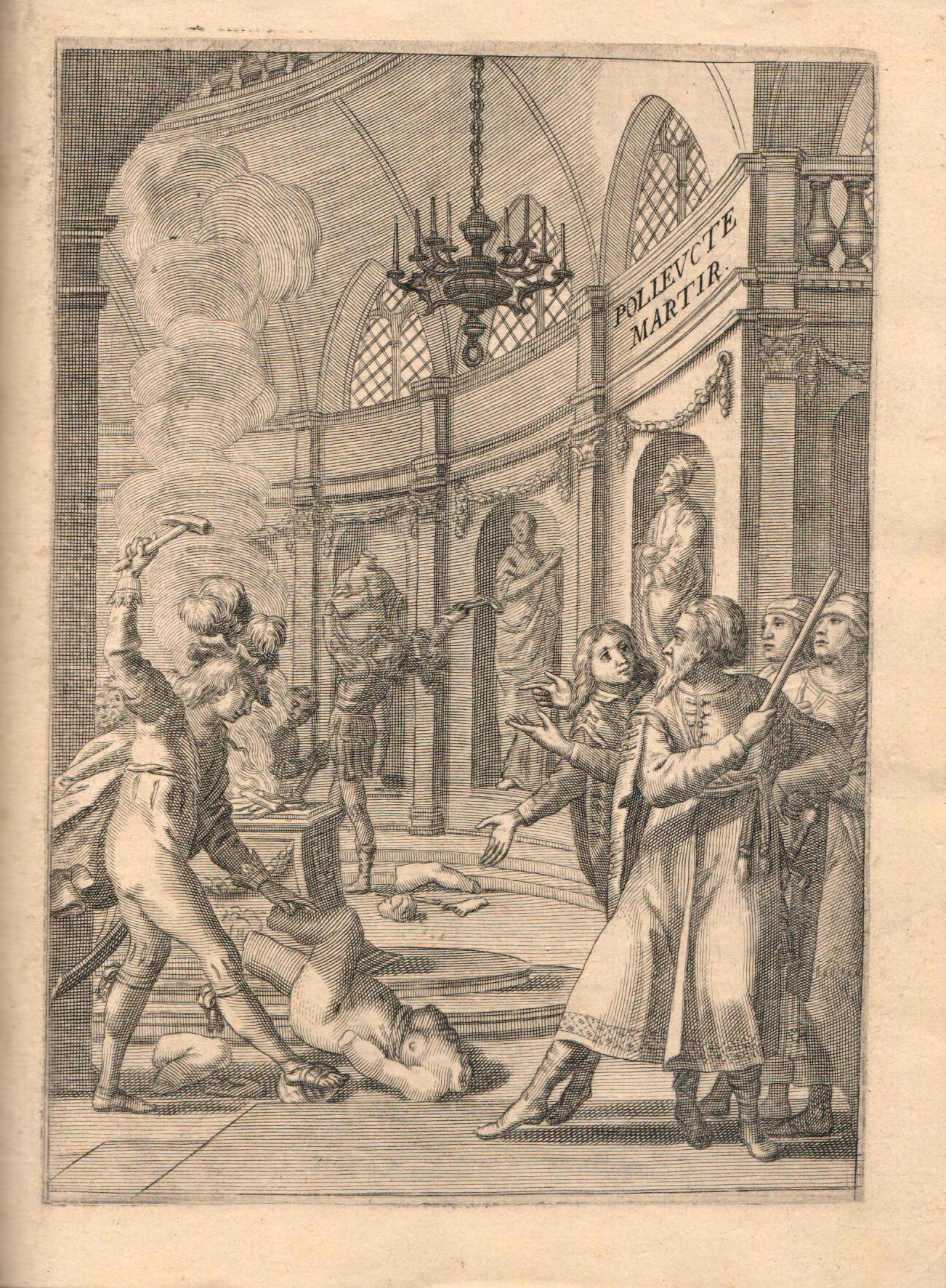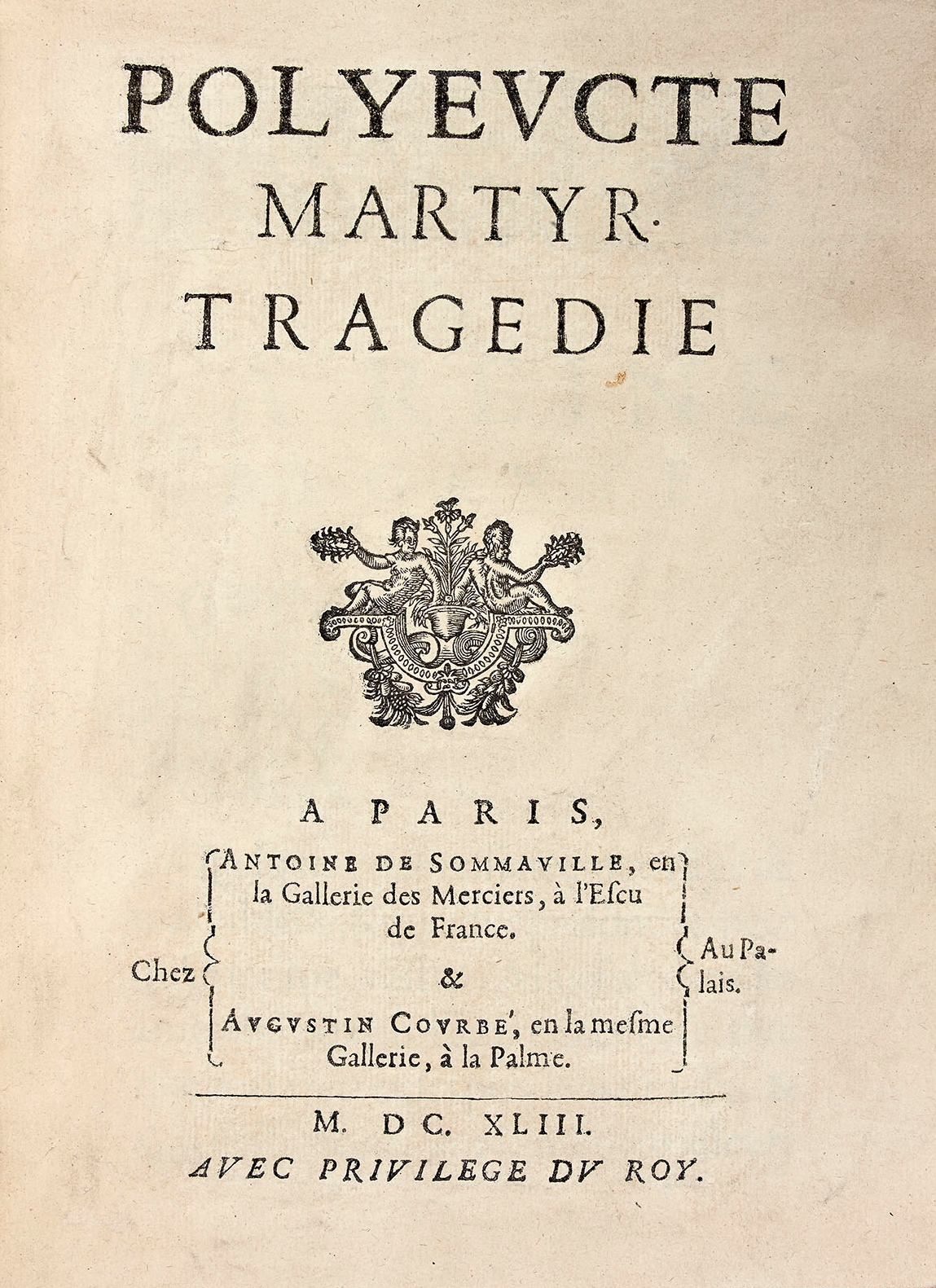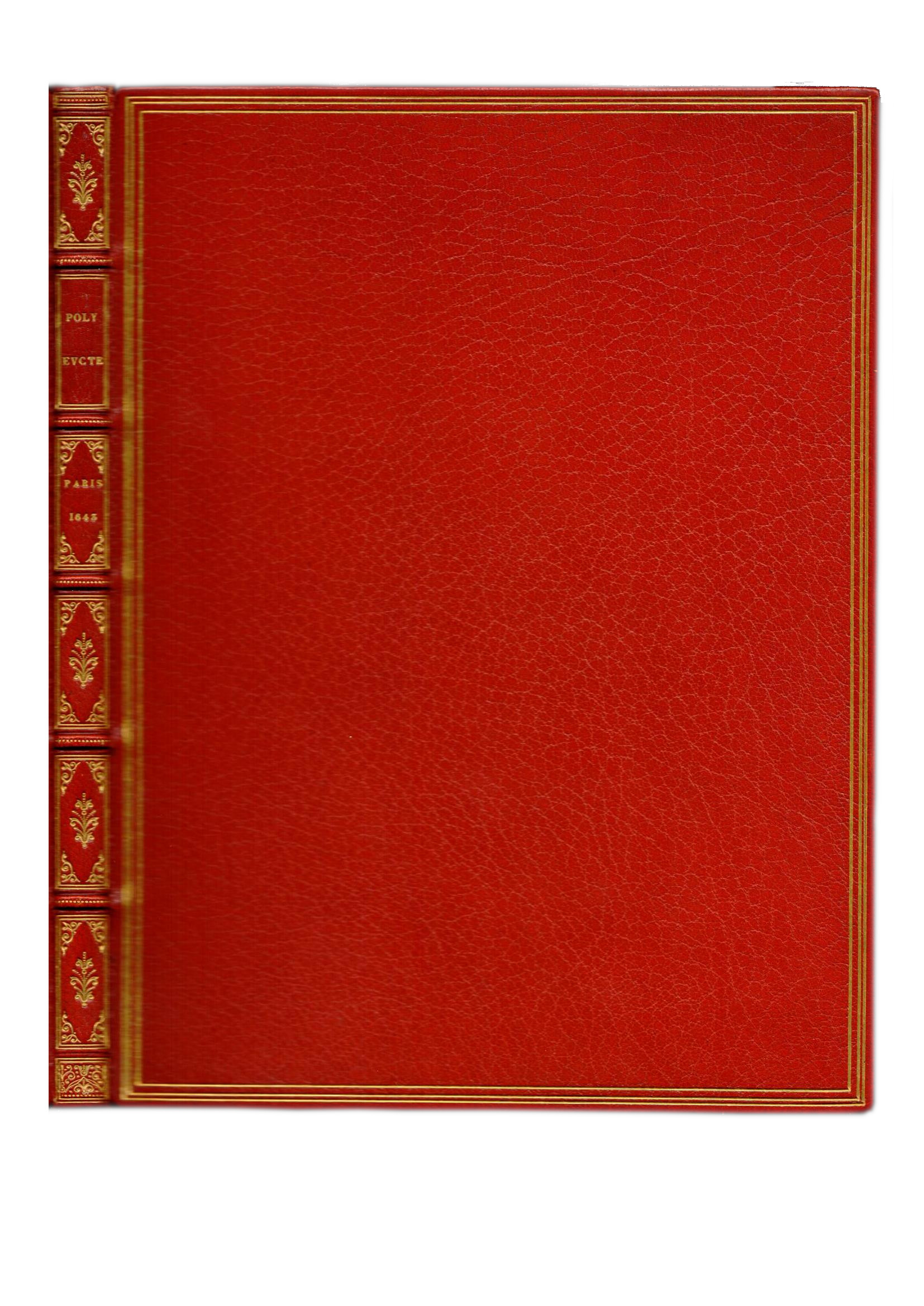A Paris, chez Antoine de Sommaville & Augustin Courbé, 1643. Avec privilège du Roy.
4to [229 x 171 mm] of (8) ll. including the frontispiece, 121 pp. and (1) l. of privilege. The privilege is dated January 30th 1643, and the Achevé d’imprimer à Rouen pour la première fois, aux depens de l’Autheur, par Laurens Maurry, ce 20, jour d’octobre 1643.
Full red morocco, triple gilt fillet around the covers, decorated ribbed spine, inner gilt border, gilt over marbled edges. Binding signed Thibaron-Joly.
One of the great first editions of French literature and one of the rarest editions of the great Corneille.
Le Petit, p. 158 ; Tchemerzine, II, 546 ; Picot, Bibliographie cornélienne, 26.
Polyeucte was played on the stage of the théâtre du Marais during the first months of 1643.
“The success of ‘Polyeucte’ was stellar and reminded us of the success of the ‘Cid’. The actors who took part in the play at the Hotel de Bourgogne earned more money than in any pagan tragedy.” (Picot)
It’s easy to understand that the pious Corneille, moved by his desire to give heroic traits to his heroes, could only give Polyeucte as a successor to Auguste: only a Christian hero could exceed in magnanimity the most admirable of the pagan heroes; only a saint could display this behavior that would appear unlikely in any other man; only a man touched by godly grace can do deeds that become believable albeit extraordinary. As Auguste’s merciful gesture, Polyeucte’s actions epitomize this credible extraordinary the theorists recommended without really believing it could be achieved and that Corneille always aspired to.
Thereby, whereas the literary critics could only approve this new tragedy, the worshippers, to whom the mere idea of pagan theatre was unacceptable, were shocked to see Corneille implement religious motives in his play. To them, Corneille’s dream compromise between aesthetic of pleasure and Christian morals – a compromise that enable artists to create works inspired by a Christian subject – was unacceptable, especially when he had the audacity to incorporate mortal and godly love. But despite its triumph with the common audience, the play remained misunderstood in so far as the public mainly focused on the purely mortal drama and the love story between Pauline and Severe (a story reminiscent of the ones lived by shepherds in contemporary pastorals in its delicateness), without realizing that it was inseparable from Polyeucte’s story, whose heroism would be inconsistent if it didn’t fit into this love story. In the later published “Examen de Polyeucte”, Corneille accurately defines Polyeucte’s style by comparison with his other tragedies: “The style is often so beautiful it forces admiration: the famous “Stanza” are some of the most beautiful pieces of Corneille’s theater”.
Corneille’s tragedy gave way to numerous musical works. The first being the three parts opera by Gaetano Donizetti (1797-1848) whose representation was prohibited in Naples by the Bourbon Government and finally saw the light in Paris in February 1840 in a French adaptation of Scribe.
Among the other works inspired by Polyeucte the most famous is the opera by the French composer Charles Gounod (1818-1893), played in Paris in 1878.
Beautiful wide margined copy of one of the rarest first editions of Corneille, coming from the libraries of Eugène Paillet and Robert Hoe with ex-libris, bound in red morocco by Thibaron-Joly.
See less information




